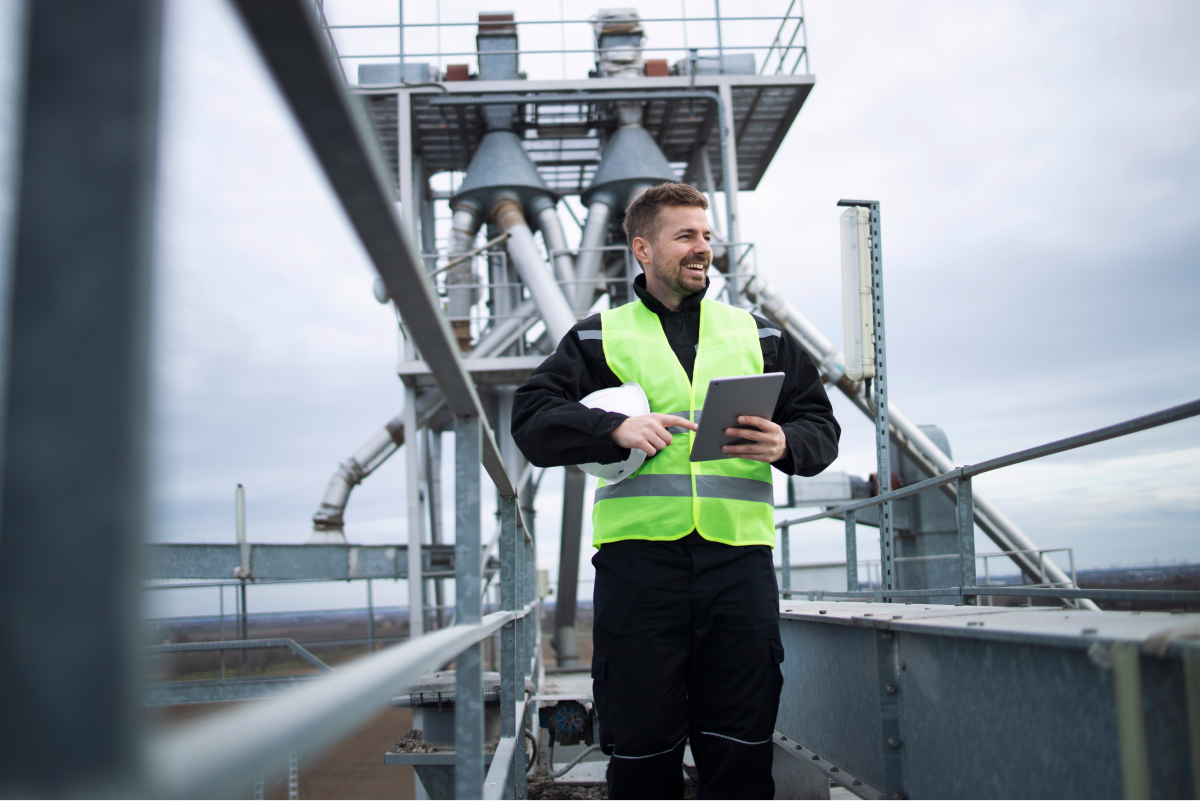At Geigerpipe, safety and environmental stewardship are non-negotiable. Our work builds and maintains critical energy infrastructure; that responsibility demands rigorous planning, disciplined execution, and transparent reporting. This article sets out how we protect our people, our communities, and the environment—every day, on every job.
Our HSE Management System
We operate an integrated QHSE framework aligned with ISO 45001 (Safety), ISO 14001 (Environment) and ISO 9001 (Quality) principles. Clear policies flow into risk registers, method statements, ITPs, and permit systems so that safety isn’t an add-on—it’s embedded in how we engineer and deliver.
Core elements
-
Leadership commitment and visible site engagement
-
Risk assessment and the Hierarchy of Controls
-
Competency, training, and authorisations
-
Document control and change management
-
Incident reporting, investigation, and learning
-
Measured KPIs with board oversight
Planning the Work: Risk First
Before mobilisation, each activity is planned with specific hazards and controls:
-
Task risk assessments (TRAs) and method statements for every job step
-
SIMOPS reviews where multiple teams interface
-
Constructability & environmental reviews to remove risks at design stage
-
Emergency response plans with local authorities and community contacts
Permit-to-Work & Lifesaving Rules
We operate a disciplined Permit-to-Work (PTW) system for hot work, confined spaces, energised systems, excavations, and lifting. Our Lifesaving Rules (energy isolation, work at height, line-of-fire, gas testing, driving, lifting, and PPE) are briefed daily and enforced consistently. Breaches trigger stop-work and learning reviews—without exception.
Process Safety & Mechanical Integrity
Beyond personal safety, we target process safety events:
-
Barrier management: verified isolations, LOTOTO, and cause-and-effect testing
-
Mechanical integrity: RBI programmes, NDT (UT/RT/MT/PT), coating and CP, leak checks
-
Metering and controls: calibrated instruments, proof-tested protection systems
-
Management of change (MoC): technical, operational, and documentation updates controlled and auditable
Training, Competency & Culture
-
Inductions tailored to site hazards and local sensitivities
-
Toolbox talks tied to the day’s tasks and weather/traffic realities
-
Authorisations: only trained, certified personnel carry out critical work (rigging, confined space, electrical, scaffolding)
-
Stop-Work Authority: every person can pause a job if something isn’t right—no blame, full backing
Contractor Management
Safety standards apply equally to all partners:
-
Prequalification against QHSE criteria
-
Alignment on method statements, ITPs, and emergency plans
-
Joint audits and close-out actions tracked to completion
-
Prompt payment practices to reduce shortcuts driven by cash stress
Environmental Protection: Avoid • Reduce • Restore
We design and execute to minimise environmental footprint.
Emissions & Energy
-
Flaring/venting minimised through start-up plans and temporary recovery options
-
LDAR (optical gas imaging, ultrasound, drones) with rapid repair playbooks
-
Efficient generators, idle-reduction, hybrid site lighting where feasible
Spill Prevention & Water
-
Secondary containment, drip trays, and bunkering controls
-
Closed-loop hydrotesting where practicable; controlled discharge after filtration
-
Spill kits, drills, and immediate reporting protocols
Waste & Materials
-
Segregation at source; certified disposal and scrap recovery
-
Low-VOC coatings and traceable steels; optimised spools to cut off-cuts
Land & Biodiversity
-
Minimise ROW width; erosion control, reseeding, and tree planting
-
Community engagement for access, traffic, and dust management
Emergency Preparedness
-
Site-specific ERP with roles, muster points, communications, and medevac routes
-
Drills for fire, medical, spill, and rescue scenarios (documented and reviewed)
-
First-aiders and trauma kits on shift; heat-stress and dehydration protocols
KPIs We Track (and Report)
-
TRIR / LTIFR and high-potential near misses
-
Permit compliance and audit close-out rates
-
Integrity findings (NCRs, leaks detected/closed, corrosion trends)
-
Environmental: fuel/energy intensity, flaring hours avoided, spill frequency, waste diversion, hydrotest water re-use
-
Training & competency: induction coverage, critical authorisations in date
2025–2030 Targets (Scopes We Control)
-
Zero fatalities and year-on-year reduction in recordable injuries
-
100% PTW audits monthly on active sites; >98% compliance sustained
-
Annual LDAR on all Geigerpipe-controlled facilities; >90% leaks closed within 30 days
-
25% reduction in diesel intensity (per productive hour) across yards and temporary works vs 2024 baseline
-
>80% waste diversion from landfill on major projects
-
ERP drills quarterly per site, with actions closed in <30 days
How Clients & Communities See It
-
Transparent reporting: KPI packs, incident learnings, and environmental dashboards
-
Joint planning: co-developed HSE plans, emergency interfaces, and community notices
-
Independent assurance: audits and inspections with close-out evidence
Final Word
Safety and environmental protection are not slogans—they’re systems, behaviours, and measurements. By engineering out hazards, enforcing disciplined permits, investing in competency, and reducing emissions and waste, Geigerpipe delivers projects that are safe for people and responsible for the environment.
